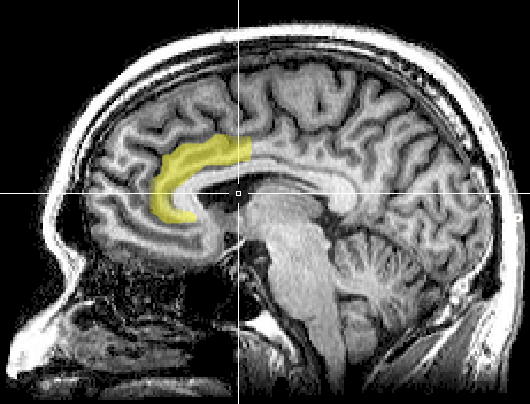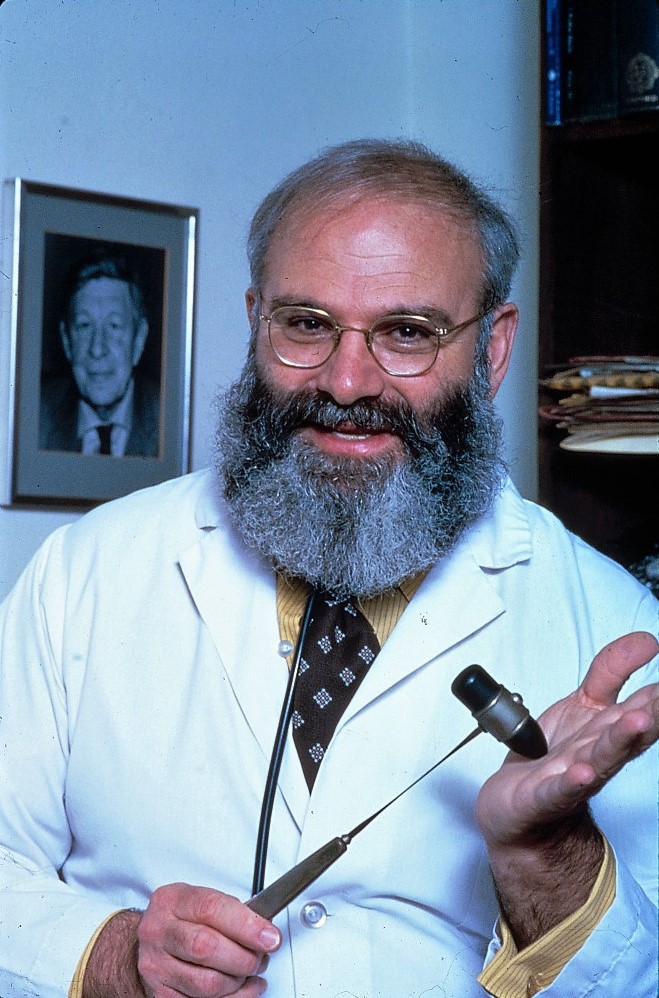|
Descartes' Error
''Descartes' Error: Emotion, Reason, and the Human Brain'' is a 1994 book by neuroscientist António Damásio describing the physiology of rational thought and decision, and how the faculties could have evolved through Darwinian natural selection. Damásio refers to René Descartes' separation of the mind from the body (the mind/body dualism) as an error because reasoning requires the guidance of emotions and feelings conveyed from the body. Written for the layperson, Damásio uses the dramatic 1868 railroad accident case of Phineas Gage as a reference for incorporating data from multiple modern clinical cases, enumerating damaging cognitive effects when feelings and reasoning become anatomically decoupled. The book provides an analysis of diverse clinical data contrasting a wide range of emotional changes following frontal lobe damage as well as lower (medulla) and anterior areas of the brain such as the anterior cingulate. Among his experimental evidence and testable hyp ... [...More Info...] [...Related Items...] OR: [Wikipedia] [Google] [Baidu] |
António Damásio
Antonio Damasio ( pt, António Damásio) is a Portuguese-American neuroscientist. He is currently the David Dornsife Chair in Neuroscience, as well as Professor of Psychology, Philosophy, and Neurology, at the University of Southern California, and, additionally, an adjunct professor at the Salk Institute. He was previously the chair of neurology at the University of Iowa for 20 years. Damasio heads the Brain and Creativity Institute, and has authored several books: his next to latest work, ''Self Comes to Mind: Constructing the Conscious Brain'' (2010), explores the relationship between the brain and consciousness. Damasio's research in neuroscience has shown that emotions play a central role in social cognition and decision-making. Life and work During the 1960s, Damasio studied medicine at the University of Lisbon Medical School, where he also did his neurological residency and completed his doctorate in 1974. For part of his studies, he researched behavioral neurology unde ... [...More Info...] [...Related Items...] OR: [Wikipedia] [Google] [Baidu] |
Neuroscientist
A neuroscientist (or neurobiologist) is a scientist who has specialised knowledge in neuroscience, a branch of biology that deals with the physiology, biochemistry, psychology, anatomy and molecular biology of neurons, Biological neural network, neural circuits, and glial cells and especially their Behavior, behavioral, Biology, biological, and psychological aspect in health and disease. Neuroscientists generally work as researchers within a college, university, government agency, or private Private industry, industry setting. In research-oriented careers, neuroscientists typically spend their time designing and carrying out scientific experiments that contribute to the understanding of the nervous system and its function. They can engage in basic or applied research. Basic research seeks to add information to our current understanding of the nervous system, whereas applied research seeks to address a specific problem, such as developing a treatment for a neurological disorder. ... [...More Info...] [...Related Items...] OR: [Wikipedia] [Google] [Baidu] |
René Descartes
René Descartes ( or ; ; Latinized: Renatus Cartesius; 31 March 1596 – 11 February 1650) was a French philosopher, scientist, and mathematician, widely considered a seminal figure in the emergence of modern philosophy and science. Mathematics was central to his method of inquiry, and he connected the previously separate fields of geometry and algebra into analytic geometry. Descartes spent much of his working life in the Dutch Republic, initially serving the Dutch States Army, later becoming a central intellectual of the Dutch Golden Age. Although he served a Protestant state and was later counted as a deist by critics, Descartes considered himself a devout Catholic. Many elements of Descartes' philosophy have precedents in late Aristotelianism, the revived Stoicism of the 16th century, or in earlier philosophers like Augustine. In his natural philosophy, he differed from the schools on two major points: first, he rejected the splitting of corporeal substance into mat ... [...More Info...] [...Related Items...] OR: [Wikipedia] [Google] [Baidu] |
Dualism (philosophy Of Mind)
Dualism most commonly refers to: * Mind–body dualism, a philosophical view which holds that mental phenomena are, at least in certain respects, not physical phenomena, or that the mind and the body are distinct and separable from one another ** Property dualism, a view in the philosophy of mind and metaphysics which holds that, although the world is composed of just one kind of substance—the physical kind—there exist two distinct kinds of properties: physical properties and mental properties * Cosmological dualism, the theological or spiritual view that there are only two fundamental concepts, such as "good" and "evil", and that these two concepts are in every way opposed to one another Dualism may also refer to: * Dualism (cybernetics), systems or problems in which an intelligent adversary attempts to exploit the weaknesses of the investigator * Dualism (Indian philosophy), the belief held by certain schools of Indian philosophy that reality is fundamentally composed of two ... [...More Info...] [...Related Items...] OR: [Wikipedia] [Google] [Baidu] |
Phineas Gage
Phineas P. Gage (18231860) was an American railroad construction foreman known for his improbable survival of an accident in which a large iron rod was driven completely through his head, destroying much of his brain's left frontal lobe, and for that injury's reported effects on his personality and behavior over the remaining 12 years of his lifeeffects sufficiently profound that friends saw him (for a time at least) as "no longer Gage". Long known as the "American Crowbar Case"once termed "the case which more than all others is to excite our wonder, impair the value of prognosis, and even to subvert our doctrines"Phineas Gage influenced 19th-century discussion about the mind and brain, debate on cerebral , and was perhaps the first case to suggest the brain's role in , and that damage to specific parts of the brain might induce specific mental changes. Gage is a fixture in the curricula of neurology, psychology, and neuroscience, one of "the great medical curiosities ... [...More Info...] [...Related Items...] OR: [Wikipedia] [Google] [Baidu] |
Anterior Cingulate
In the human brain, the anterior cingulate cortex (ACC) is the frontal part of the cingulate cortex that resembles a "collar" surrounding the frontal part of the corpus callosum. It consists of Brodmann areas 24, 32, and 33. It is involved in certain higher-level functions, such as attention allocation, reward anticipation, decision-making, ethics and morality, impulse control (e.g. performance monitoring and error detection), and emotion. Anatomy The anterior cingulate cortex can be divided anatomically based on cognitive (dorsal), and emotional (ventral) components. The dorsal part of the ACC is connected with the prefrontal cortex and parietal cortex, as well as the motor system and the frontal eye fields, making it a central station for processing top-down and bottom-up stimuli and assigning appropriate control to other areas in the brain. By contrast, the ventral part of the ACC is connected with the amygdala, nucleus accumbens, hypothalamus, hippocampus, and anter ... [...More Info...] [...Related Items...] OR: [Wikipedia] [Google] [Baidu] |
Somatic Marker Hypothesis
The somatic marker hypothesis, formulated by Antonio Damasio and associated researchers, proposes that emotional processes guide (or bias) behavior, particularly decision-making. '' Descartes' Error'' "Somatic markers" are feelings in the body that are associated with emotions, such as the association of rapid heartbeat with anxiety or of nausea with disgust. According to the hypothesis, somatic markers strongly influence subsequent decision-making. Within the brain, somatic markers are thought to be processed in the ventromedial prefrontal cortex (VMPFC) and the amygdala. The hypothesis has been tested in experiments using the Iowa gambling task. Background In economic theory, human decision-making is often modeled as being devoid of emotions, involving only logical reasoning based on cost-benefit calculations. In contrast, the somatic marker hypothesis proposes that emotions play a critical role in the ability to make fast, rational decisions in complex and uncertain situation ... [...More Info...] [...Related Items...] OR: [Wikipedia] [Google] [Baidu] |
Gerald Edelman
Gerald Maurice Edelman (; July 1, 1929 – May 17, 2014) was an American biologist who shared the 1972 Nobel Prize in Physiology or Medicine for work with Rodney Robert Porter on the immune system. Edelman's Nobel Prize-winning research concerned discovery of the structure of antibody molecules.Structural differences among antibodies of different specificities by G. M. Edelman, B. Benacerraf, Z. Ovary and M. D. Poulik in ''Proc Natl Acad Sci U S A'' (1961) volume 47, pages 1751-1758. In interviews, he has said that the way the components of the immune system evolve over the life of the individual is analogous to the way the components of the brain evolve in a lifetime. There is a continuity in this way between his work on the immune system, for ... [...More Info...] [...Related Items...] OR: [Wikipedia] [Google] [Baidu] |
Oliver Sacks
Oliver Wolf Sacks, (9 July 1933 – 30 August 2015) was a British neurologist, naturalist, historian of science, and writer. Born in Britain, Sacks received his medical degree in 1958 from The Queen's College, Oxford, before moving to the United States, where he spent most of his career. He interned at Mount Zion Hospital in San Francisco and completed his residency in neurology and neuropathology at the University of California, Los Angeles (UCLA). After a fellowship at the Albert Einstein College of Medicine, he served as neurologist at Beth Abraham Hospital's chronic-care facility in the Bronx, where he worked with a group of survivors of the 1920s sleeping sickness encephalitis lethargica, who had been unable to move on their own for decades. His treatment of those patients became the basis of his 1973 book '' Awakenings'', which was adapted into an Academy Award-nominated feature film in 1990, starring Robin Williams and Robert De Niro. His numerous other best-selling ... [...More Info...] [...Related Items...] OR: [Wikipedia] [Google] [Baidu] |
Triune Brain
The triune brain is a model of the evolution of the vertebrate forebrain and behavior, proposed by the American physician and neuroscientist Paul D. MacLean in the 1960s. The triune brain consists of the reptilian complex (basal ganglia), the paleomammalian complex (limbic system), and the neomammalian complex (neocortex), viewed each as independently conscious, and as structures sequentially added to the forebrain in the course of evolution. The basal ganglia is in charge of our primal instincts, the limbic system is in charge of our emotions and the neocortex is responsible for objective or rational thoughts. Since the 1970s, in some circles of evolutionary and developmental neuroscience, the concept of the triune brain has been subject to criticism and is regarded as a myth. Due to its longevity, the triune brain idea has also been called "one of the most successful and widespread errors in all of science." as the hypothesis is no longer espoused by the majority of comparativ ... [...More Info...] [...Related Items...] OR: [Wikipedia] [Google] [Baidu] |
Cognitive Neuroscience
Cognitive neuroscience is the scientific field that is concerned with the study of the biological processes and aspects that underlie cognition, with a specific focus on the neural connections in the brain which are involved in mental processes. It addresses the questions of how cognitive activities are affected or controlled by neural circuits in the brain. Cognitive neuroscience is a branch of both neuroscience and psychology, overlapping with disciplines such as behavioral neuroscience, cognitive psychology, physiological psychology and affective neuroscience.Gazzaniga 2002, p. xv Cognitive neuroscience relies upon theories in cognitive science coupled with evidence from neurobiology, and computational modeling. Parts of the brain play an important role in this field. Neurons play the most vital role, since the main point is to establish an understanding of cognition from a neural perspective, along with the different lobes of the cerebral cortex. Methods employed in c ... [...More Info...] [...Related Items...] OR: [Wikipedia] [Google] [Baidu] |







